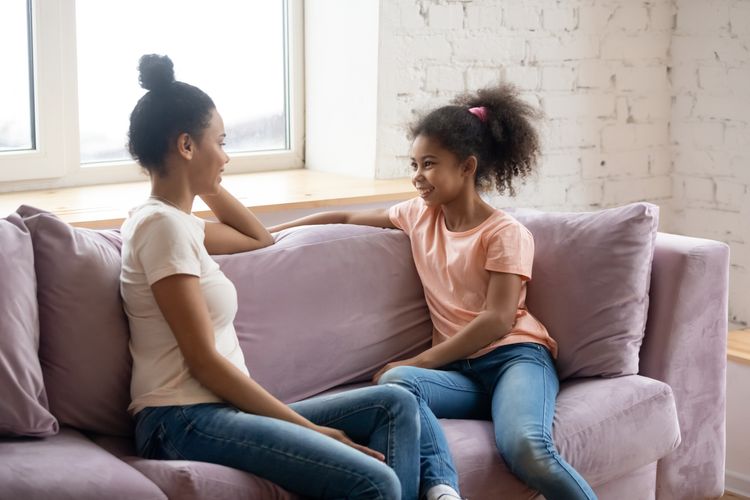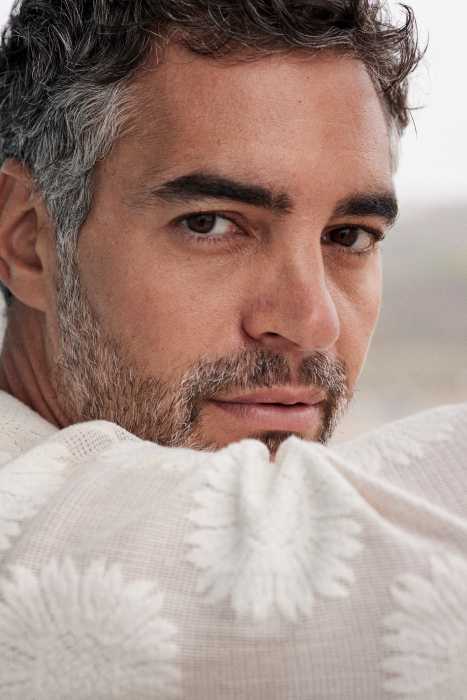Many parents dread having the talk — the puberty conversation — with their kids.
Some parents might feel awkward having these types of talks and others might be looking for the right resources to use to guide the convo.
Samantha Huggins, Facilitator + Educator + Perinatal Health Supporter, shared how to talk to kids about puberty and some resources and advice parents can use.
Why is it important for parents to have a conversation about puberty with their kids? Plainly, if you or someone you trust doesn’t have a conversation (or many!) with your kids about their bodies and other bodies too, someone else will. Seriously, though, kids have access to all kinds of information these days, much of which we have no control over.
A great way to ensure a strong foundation in body literacy and self-respect is to start the conversations ourselves and create space for our kids to come back with questions as they build on the concepts we introduce. Ideally, what our kids learn about their bodies and their changes will be honest, empowering information that is delivered to them at a pace and on a level that they will be able to absorb.
When we equip our children with an understanding about their bodies and the bodies around them, it creates safety and understanding as well as building confidence and community among kids and within families.
How should parents prepare to have these kinds of talks? If your kids are really young, you can start by simply answering questions when they come up. Our toddlers have curious little minds and ask all sorts of questions about bodies. If your kids are in this age category, consider keeping an open-door (or semi-open-door) policy and answer questions as honestly as you can when they come up. I also encourage families to use whatever language feels appropriate to describe body parts and to also ensure that anatomical names are communicated too. The terms “vulva” and “pubic hair” are only weirder than “elbow” and “calf” because we let them be!
What is the time frame for having this conversation? Does it vary depending on gender? I encourage us to think about conversations about bodies like they’re ongoing and not a box checked. We are all constantly changing physically and mentally. Continuing to check in over time rather than a one and done convo might be the path of least resistance for us all. Again, the more we normalize change the more normal it becomes.
Here is an example of a short conversation: “I think it’s time to change up your face soap. Want to go shopping/try mine, etc. Just like growing taller, you will notice that your skin becomes a little more oily in spots. It’s super normal. Here is my experience with it…”
The timing of these conversations are not gender specific, rather they are personality specific. I have taught sex ed classes in rooms where kids are really ready to talk about it and are sitting right next to others who really aren’t. Same age, same anatomy. Different person, different timeline.
For parents who are still nervous about having this talk, what are some tips or key points that are important to include? This doesn’t have to be a one and done conversation that connects body changes directly to sex on the first drop-in. It can start with a question or two on your end and then maybe a little convo blooms. If not, you can let them know that you have bought these great books and that you are going to leave them in their room/space. Or show them where you will be tucking them into the shelf so they know just where to find it. Remember, you fully survived this time of your life and you have a lot of experience that you can contribute to the conversation.
You get the party started and then let your kids lead the conversation as much as you can.
Don’t try to give info that they aren’t ready for. If your kid is starting to squirm, they might not actually have a question about that topic yet. You can pause on that topic and bring it back up down the road. It’s OK if the conversation doesn’t go perfectly. It won’t always, even in the most open-door families.
What resources do you recommend to help steer the conversation? A couple of my favorite books for the tween set (8-12) are Celebrate Your Body (and Its Changes, Too!), by Sonya Renee Taylor and Puberty is Gross but Also Really Awesome, by Gina Loveless. And the resource guide on the website Sex Positive Families is outstanding. You can put in filters by subject and age which lands you with a great and safe list of books and other resources for the age group you are trying to appeal to.
Do you have any additional suggestions? As a facilitator, educator, doula, and mom, I have learned a lot about having hard conversations. Using inclusive language like “we, our and us” rather than “I”, “me”and “you” creates connectivity, reduces stress and builds trust. Speak from your heart. Say the hard things. Listen with both ears. Release yourself from the myth of perfection. We aren’t. Period. And we do not have to be. In fact, it will be better for everyone if we show up as we are (and a little messy) than to freeze from fear of getting it wrong and do nothing.
This story first appeared on NewYorkFamily.com.
Sign up for Long Island Press’ email newsletters here. Sign up for home delivery of Long Island Press here. Sign up for discounts by becoming a Long Island Press community partner here.

































